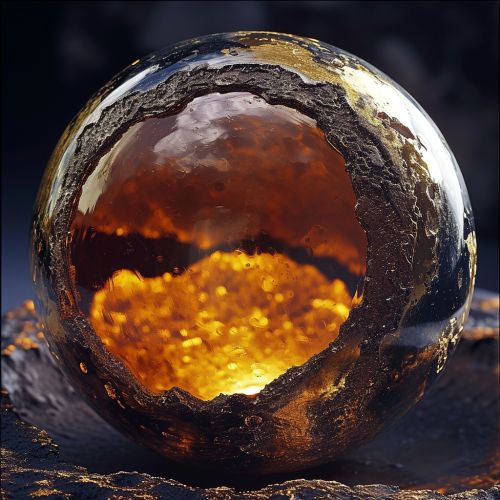Inner core
Structure and Composition
The inner core, the Earth's innermost part, is primarily a solid ball with a radius of about 1,220 kilometers, or 760 miles (about 70% of the Moon's radius). It is believed to consist primarily of an iron–nickel alloy and to be approximately the same temperature as the surface of the Sun.
Discovery
The existence of an inner core distinct from the liquid outer core was discovered in 1936 by Danish seismologist Inge Lehmann, who deduced from observations of seismic waves that the inner core is solid.
Composition
The composition of the inner core is thought to be primarily an iron–nickel alloy. The temperature of the inner core is estimated to be approximately 5700 K (5430 °C or 9806 °F). This is about the same temperature as the surface of the Sun.
Physical Properties
The inner core is solid and unattached to the mantle, suspended in the molten outer core. It is believed to have solidified as a result of pressure-freezing which occurs to most materials when temperature decreases or pressure increases.
Seismic Observations
Seismic observations have shown that compressional waves pass through the inner core at about 70% of the velocity expected for a homogeneous iron crystal. This seismic velocity is significantly lower than would be expected for iron and nickel at core pressures and temperatures, which has led to speculation that the inner core contains a significant amount of light elements.
Rotation
The inner core is believed to rotate at a different speed than the rest of the planet. This differential rotation has been measured using changes in the travel times of seismic waves from earthquakes.
Growth
The growth of the inner core is thought to play a crucial role in driving convection and the geodynamo in the outer core, which in turn generate the Earth's magnetic field.
See Also


